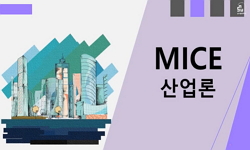This study was conducted to establish the optimal temperature condition before oocyte activation in B6D2 F1 mouse. In experiment 1, two embryo culture media (CZB vs KSOM) were evaluated for the development of activated mouse oocytes. Parthenogenetic e...
http://chineseinput.net/에서 pinyin(병음)방식으로 중국어를 변환할 수 있습니다.
변환된 중국어를 복사하여 사용하시면 됩니다.
- 中文 을 입력하시려면 zhongwen을 입력하시고 space를누르시면됩니다.
- 北京 을 입력하시려면 beijing을 입력하시고 space를 누르시면 됩니다.
In Vitro Development of Mouse Parthenogenetic Embryos: Effect of Temperature before Oocyte Activation
한글로보기https://www.riss.kr/link?id=A75265287
- 저자
- 발행기관
- 학술지명
- 권호사항
-
발행연도
2005
-
작성언어
English
- 주제어
-
자료형태
학술저널
-
수록면
117-120(4쪽)
- 제공처
- 소장기관
-
0
상세조회 -
0
다운로드
부가정보
다국어 초록 (Multilingual Abstract)
This study was conducted to establish the optimal temperature condition before oocyte activation in B6D2 F1 mouse. In experiment 1, two embryo culture media (CZB vs KSOM) were evaluated for the development of activated mouse oocytes. Parthenogenetic embryos cultured in KSOM showed better blastocyst development than ones cultured in CZB(56.2% vs 81.0%, p<0.01). Two-hour of pre-incubation before activation significantly reduced the number of hatched blastocysts in KSOM (22.0% versus 8.8%, p<0.05). In experiment 2, recovered oocytes were pre-incubated at different temperature conditions before activation. The experimental groups were divided by 5 as follows. Group A: pre-incubation for 120 min at 37℃, Group B: pre-incubation at 37℃ for 90 min then at 25℃ for 30 min, Group C: pre-incubation at 37℃ for 60 min then at 25℃ for 60 min, Group D: pre-incubation at 37℃ for 30 min then at 25℃ for 90 min, and Group E: pre-incubation at 25℃ for 120 min before activation. Group A (67.6%) and B (66.7%) showed better development to the blastocyst stage than other groups (Group C: 50.0%, Group D: 49.2%, Group E: 33.3%, p<0.05). The present study indicates that the temperature before activation affects the development of B6D2 F1 mouse parthenogenetic oocytes and exposure to room temperature should be limited to 30-min when the oocytes are left in HEPES-buffered medium for micromanipulation.
목차 (Table of Contents)
- INTRODUCTION
- MATERIALS AND METHODS
- RESULTS
- DISCUSSION
- REFERENCES
- INTRODUCTION
- MATERIALS AND METHODS
- RESULTS
- DISCUSSION
- REFERENCES
동일학술지(권/호) 다른 논문
-
Effect of Inhibitor of Glycogen Synthase Kinase 3 on Self-Renewal of Human Embryonic Stem Cells
- 한국동물생명공학회(구 한국동물번식학회)
- Lee Eunyoung
- 2005
-
- 한국동물생명공학회(구 한국동물번식학회)
- Ka Hakhyun
- 2005
-
Expression and Characterization of Purinergic Receptor, P2Y10 in Hematopoietic Stem Cells
- 한국동물생명공학회(구 한국동물번식학회)
- Lee Eun-Jong
- 2005
-
- 한국동물생명공학회(구 한국동물번식학회)
- Yoon J. T.
- 2005




 코리아스칼라
코리아스칼라







